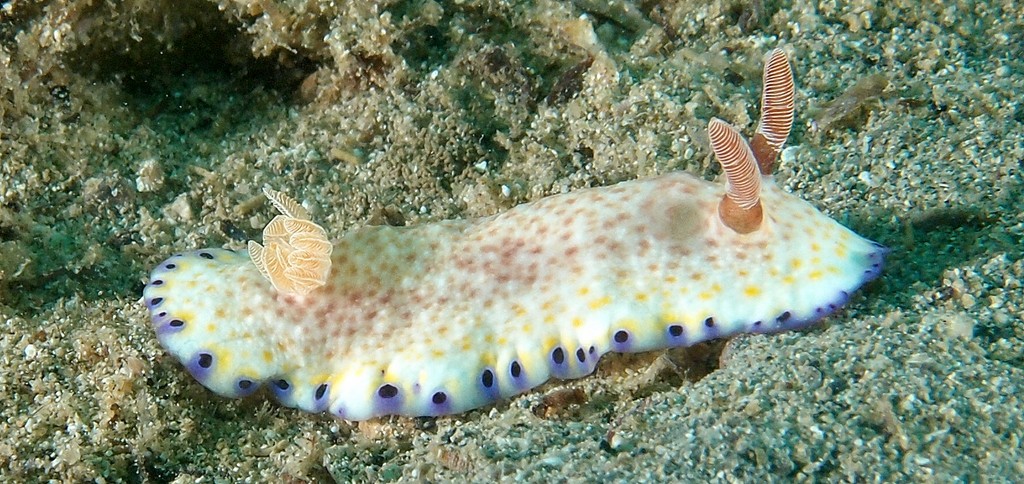GONIOBRANCHUS AUREOPURPUREUS - (COLLINGWOOD, 1881)
Opisthobranchia (Infraclass) > Nudibranchia (Order) > Euctenidiacea (Suborder) > Doridacea (Infraorder) > Doridoidea (Superfamily) > Chromodorididae (Family) > Goniobranchus (Genus)
Description
Ce doris a un manteau blanc, tacheté de multiples petits points jaunes. La région centrale du manteau présente des ombres irrégulières brunes à rougeâtres. La bordure du manteau est marqué d'une série de gros points pourpres foncés entourés de bleu violacé et parfois de jaune du côté intérieur. Les rhinophores sont rosés avec une base plus foncée. Les branchies sont translucides bordées de violet.
Synonymes
Chromodoris aureopurpurea (Collingwood, 1881)
Chromodoris variata (Risbec, 1928)
Glossodoris aureopurpurea (Collingwood, 1881)
Glossodoris variata (Risbec, 1928)
-------------------------------
Goniobranchus aureopurpureus is a species of very colorful sea slug, a dorid nudibranch, a marine gastropod mollusk in the family Chromodorididae.
Identification
The species which grows to a little over 40 mm in length, is white with small diffuse brown patches and yellow spots over the central dorsum. The margin is distinct, bearing a band of diffuse purple, broken by larger deep purple spots. In some specimens there are yellow spots on the inside edge of the large purple spots. The rhinophores and gills are purple to red-brown with white edge.
Distribution
Goniobranchus aureopurpureus was originally described from the coast of China. It's distribution is now documented throughout the tropical western Pacific, to New Caledonia, Australia and Indonesia.
Similar species
When identifying this species, it should not be confused with other species having purple marginal spots - Goniobranchus rufomaculatus and Goniobranchus alius, both of which have purple marginal spots. In these two species, the spots are right on the edge of the mantle however. Also similar,are Goniobranchus collingwoodi (the center of the dorsum in this species is deep reddish brown, with white specks), and Goniobranchus tennentanus from the Indian Ocean. In the latter, the central portion of the dorsum is brown with large purple spots.
